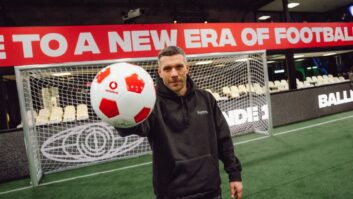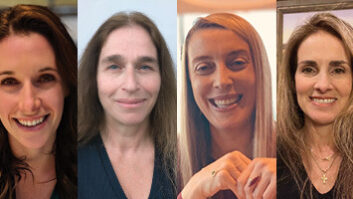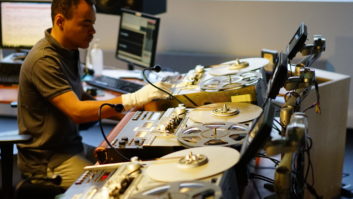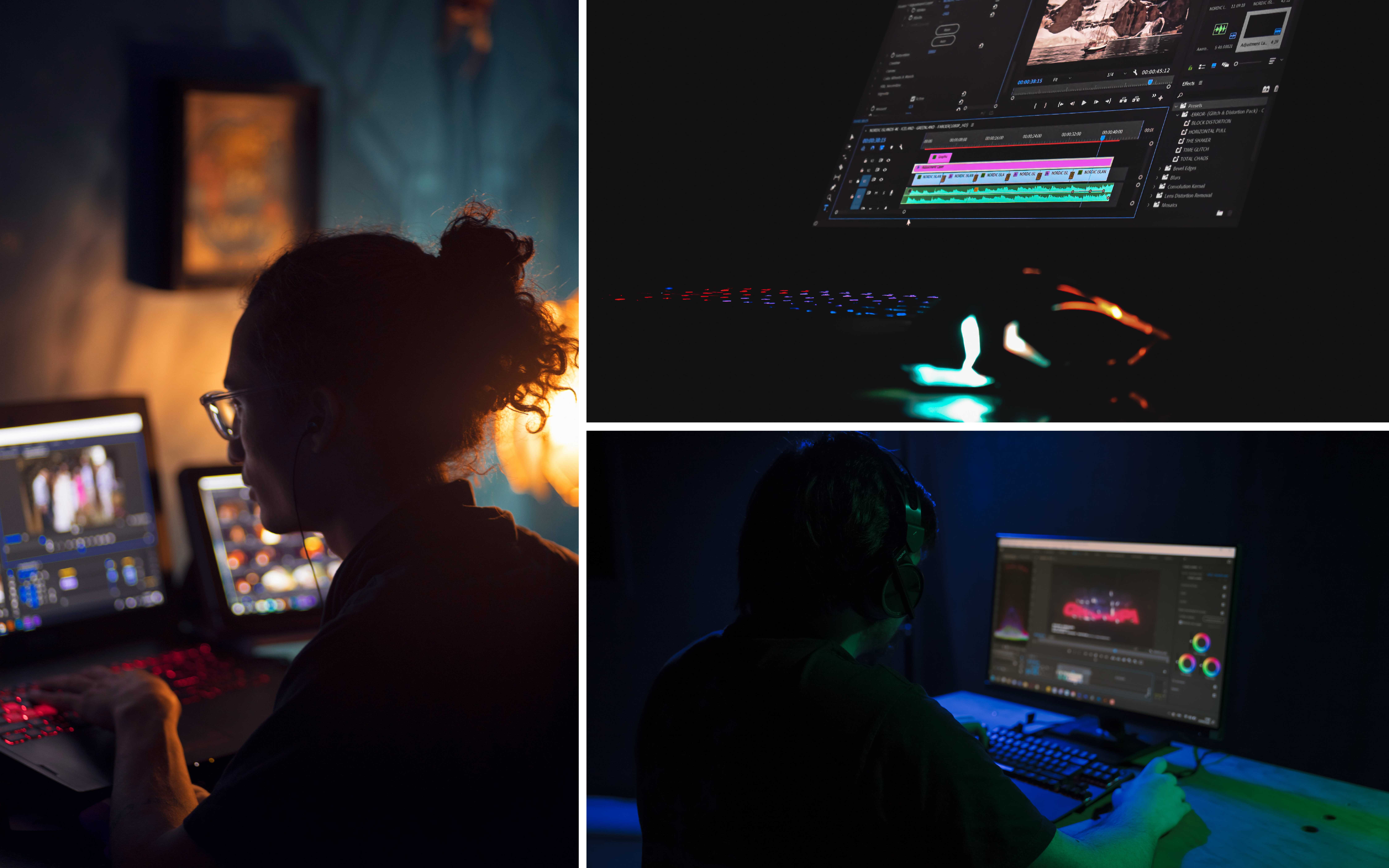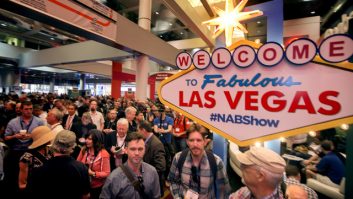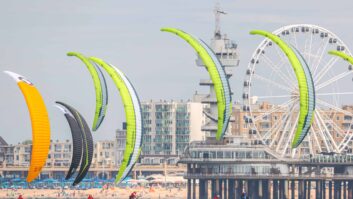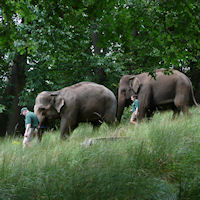
For a new ten-part 3D observational documentary series filmed in Woburn Safari park, co-producers CAN Communicate devised a new handheld camera. Among the other cameras used to shoot the show was a GoPro 3D, one of which was inadvertently chewed by a lion. And yes… it was all captured on film.
The 10×60 Safari Adventure co-produced by Renegade Pictures and CAN Communicate is one of Discovery Europe’s first 3D commissions. In the final stages of post production, it is intended for 3net in the US in December as well as transmission on February 4 as a simulcast on Sky 3D and in 2D. Rhinos, lions and giraffes are among the wildlife featured along with their keepers and safari managers. The directors were Natalie Wilkinson and Livia Simok.
Alan Hayling, Renegade co-founder, explained, “Discovery came to us because of our previous 3D experience and asked us what we could do at relatively low unit cost. There are companies like Atlantic Productions focussed on the very high end, but we looked at whether the high volume, lower cost – but still high quality 3D model – could work. That’s how the series arose. In discussion with CAN we concluded that we could control cost – and control the 3D – if we shot in a single location, provided that location had a lot of story going on.
“Shooting in Africa or a big production with Sir David Attenborough was out of the question, so the answer was to find a controlled location where you can get significant economies of scale. If you can do a large volume then you could make really significant savings and not make 3D too much of an extra cost.”
Hayling said the cost premium is around 25 per cent that of a comparative 2D HD shoot. “That cost was incurred partly on kit but also on additional crew to move the heavy rig around, a stereographer and rig technician.”
The main unit was a pair of Sony P1s with Canon HJ22 lenses mounted on a 3Ality Technica Pulsar. The cameras were worked through an MPE-200 for alignment which was powered from a small – and crucially silent – hydrogen cel gas-powered generator.
A converted army truck was fitted with a lion-proof cage with a gap cut out to fit the camera’s mirror box through.A second unit camera system was devised by CAN as a bespoke system using 2K Cunima cameras shooting side by side.
According to David Wooster, a director of CAN Communicate, “We looked at various 3D handheld options but none would allow us to get as close as we needed to the subject. We knew that we’d be filming vets and keepers in confined spaces where we’d have to be three to four feet from the nearest point of anything in the frame.”
Stereographer, John Perry, adds: “We needed to have a handheld solution we could set up and use really quickly, to grab and go. It needed to be portable. We researched the market for ages but nothing satisfied Sky’s specifications.”
Although the series was shot for Discovery, the producers worked to the Sky 3D spec, which requires HD quality imagery recorded at a minimum 50Mb/s.
Perry took the lead in uniting a pair of 2/3 inch sensor Cunima cameras in a bespoke housing on an aluminium mount for handheld operation.
“In terms of I/O, you can put them right next to each other,” said Wooster. “There’s no zoom, but it allowed us to get close to the subject. The first version was like a spider’s web of cables. The lenses themselves only really functioned 100 per cent perfectly the day before shooting started. But from then on it worked extremely well and gave us the versatility we needed.”
In reality the crew used the unit shoulder-mounted with two camera-ops trained to “operate as if their whole body were a human steadicam,” said Wooster.
“A lot of people grab a 3D camcorder and just shoot it if it were 2D, forgetting the limitations as to how close they are to the subject. If you get too close to something then the object can be pushed too far out of the screen and be unfixable in post. You have to have cameramen trained to shoot 3D handheld in a disciplined way. You can’t just wave it around but be incredibly conscious of framing and movement.”
The Cunima’s were recorded at 140Mb/s to a pair of Nano flash recorders with the P1s recorded at 100Mb/s.“After some early teething problems to find acceptable camera angles in this configuration, the results proved fantastic,” concurred Duncan Humphreys, CAN Communicate Creative Director.
The production generated 250 hours of rushes, around three hours a day at a ratio of 25:1, similar to the schedule of a 2D documentary.
Editing was done in 2D on Avid with finishing on a pair of Pablo’s linked to a Quantel Genetic SAN. The project was originally conceived in 3D alone but an identical 2D cut will be versioned for Discovery after its execs liked what they saw.
“We could have done with more time in post because we are working 24 hours a day to finish the show, which is fine, but not an ideal scenario,” said Wooster. “The biggest thing from when we started the show to where we are now is that there is starting to be an evolution of 3D technology and what’s coming into market, which is making documentary-style 3D filming more and more feasible.”
These, he said, include Sony’s shoulder mounted camcorder and a number of recording options from One Beyond and Cineform to AJA cards.
One development that may assist future similar productions, said Humphreys, is a ruggedised, location battery powered MPE, with a built in recorder.
Renegade previously produced the 3D comedy short Meera Syal’s Little Crackers for Sky 3D and the two hour anaglyph doc The Queen in 3D which aired on Channel 4 in late 2009. The producer is currently developing additional stereo 3D series with two broadcasters.
A number of 3D GoPros were used for various dramatic shots. “One lion had a good chew giving a great indication of what it’s like to be eaten by a lion,” says Humphreys. “The 3D did tend to fall apart at that point as it was a little strong!”
www.cancommunicate.com
